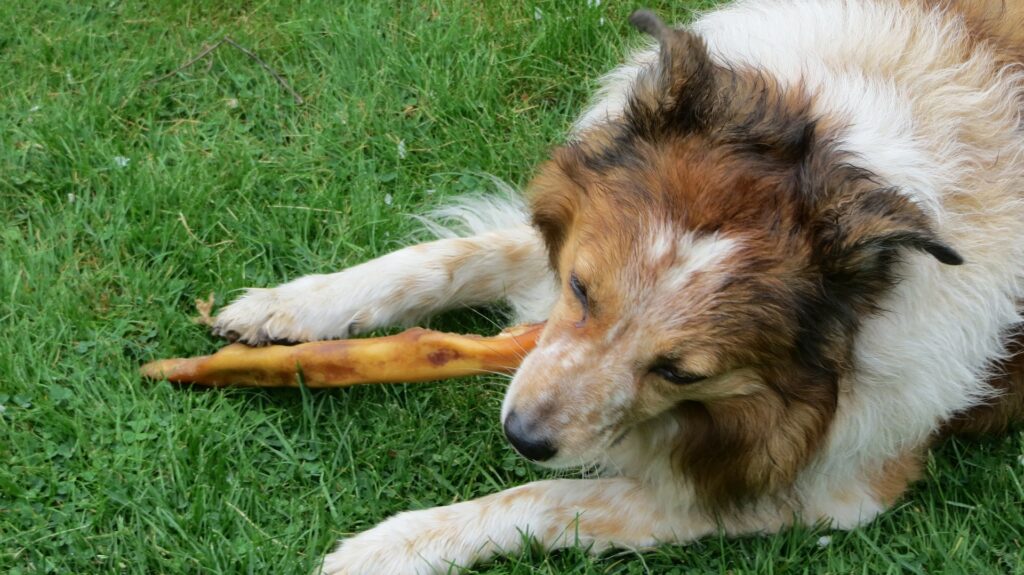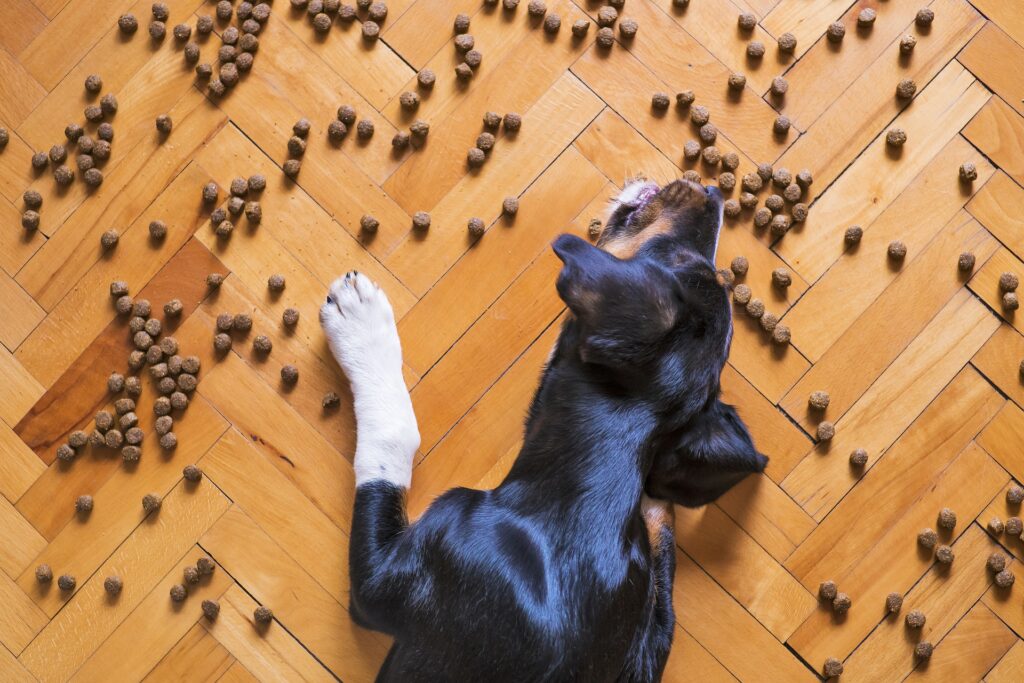Many pet owners wonder if a raw food diet is a way to go with their dogs. There are pros and cons, so it’s a good idea to become an informed pet owner before making a decision. You have to know the risks to see if it’s worth putting your fur baby on a raw food diet.

Understanding Raw Food Diet
A raw food diet includes specific types of meat, mainly organ and muscle meat. It also contains bones and various other ingredients. The key is to make sure that whatever you feed your dog is nutritionally balanced.
Dogs are carnivorous, so it’s essential to include enough protein in their diet. They will get their protein from meats and raw eggs while getting fiber from appropriate fruits and vegetables. Note that certain fruits and veggies are toxic for dogs, so you need to make sure you don’t put any of those in what they eat.
Pro: Health Can Improve
If your dog follows a balanced nutritional diet, there is real potential to support its bones and joints by eating crushed bone. As bones are a source of calcium, marrow, and various other nutrients, eating raw bones can help a dog maintain good bone health.
Again, if nutrition is balanced in your raw food diet, your dog can look forward to all of the meats it would enjoy if it was out in the wild. The highly digestible protein works its way through your dog’s system without anything that shouldn’t be there when comparing it to processed food.
Dogs will also naturally consume various fruits and veggies that contribute needed vitamins and minerals, too. Some of the best raw fruits and vegetables for dogs include broccoli, celery, pumpkin, and spinach, in addition to apples and sweet potatoes.
Con: Risks of a Raw Food Diet
When you feed your dog a raw food diet, you need to know the risks. Feeding raw food to your dog always carries the chance for bacterial contamination for salmonella or E. coli. It’s the same risk that exists for humans, so if your dog gets sick, he’s going to be miserable. These pathogens can also be transmitted to humans.
Raw diets also run the risk of nutritional imbalance. Too much protein can lead to stress on the kidneys or the liver, resulting in chronic illness. Eating bones can also cause problems. They can cause your dog to choke, break their teeth, and cause internal wounds if a splinter punctures any body part as they digest it.
Con: You Must Be Cautious and Aware
You will come across claims that a raw food diet makes your dog healthier and provides a shinier coat. Some claim that a raw food diet also gives your dog more energy and better teeth. Unfortunately, there isn’t any genuine scientific information to back up these claims – they’re all anecdotal.
The reality is that a dog that is eating more fat than before will develop a glossier coat. If they were eating less fat than before, you’re going to see those changes. A shiny coat does not mean nutritional balance. A dog needs a total of 37 different nutrients to stay healthy, and getting the right balance can be challenging.
Alternatives to a Raw Food Diet

When it comes to your dog’s well-being, it’s essential to understand that a raw food diet is not the best choice for all dogs. Your goal might be to make sure your dog eats whole foods. It might be better for them if you cook their meals before you feed them.
Even still, dogs with kidney disease or liver failure should not eat a raw food diet. It’s too easy to overdo the protein. Dogs that also suffer from cancer or immunodeficiencies should avoid raw food diets and instead eat at least a home-cooked diet.
People who adopt a raw food diet often believe that the commercial dog foods on the market are somehow dangerous. While some commercially available dog food may not be as healthy as others, they have a proven balance of necessary nutrients.
Closing Thoughts
A raw food diet can be healthy if it’s done correctly, and that means making sure that the food has the right amount of nutrition for your pup. Dog owners want what is best for their furry friends, but sometimes that isn’t a raw food diet. If you decide to feed your dog a raw diet, you need to be aware of the potential risks. When you have doubts, discuss options with your vet to make sure you’re doing the best you can for your dog.



